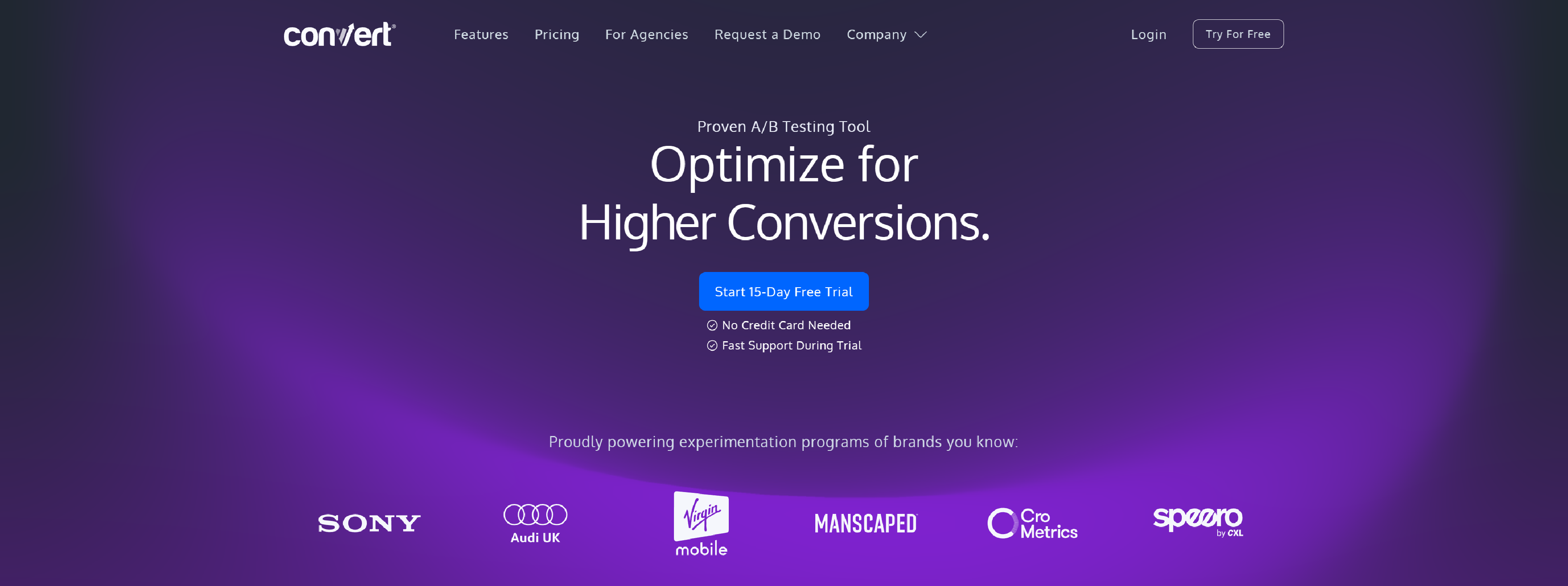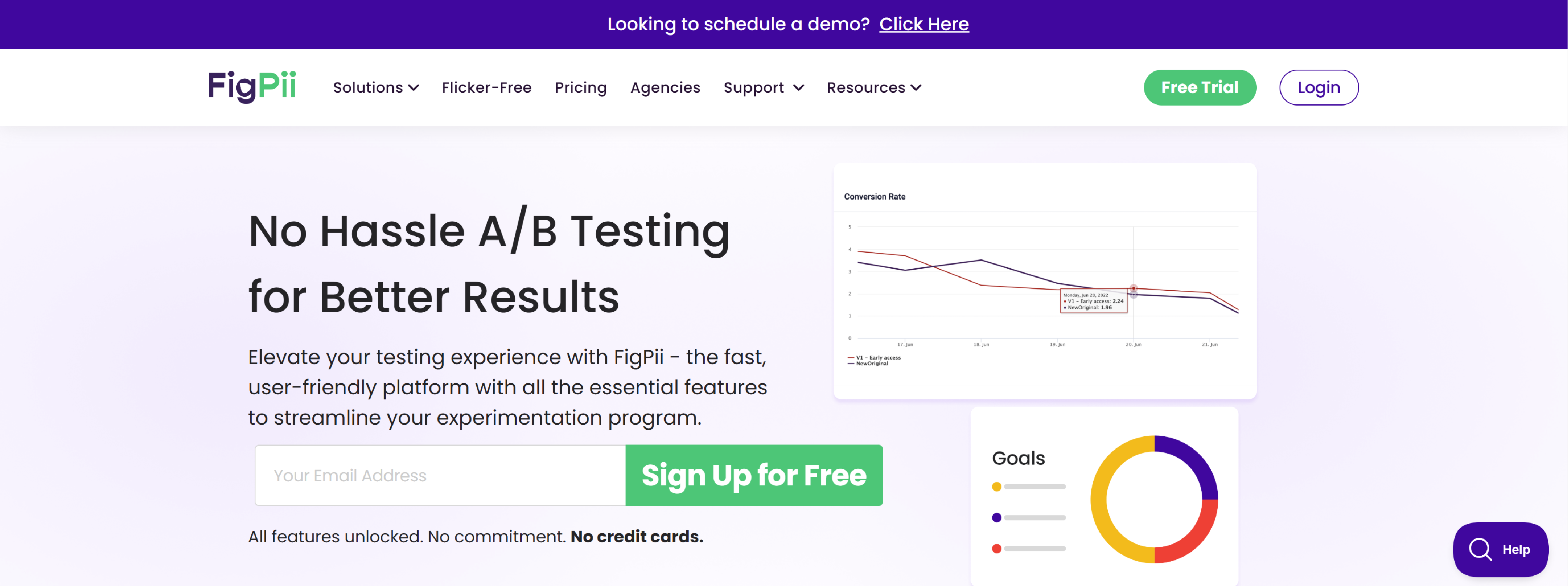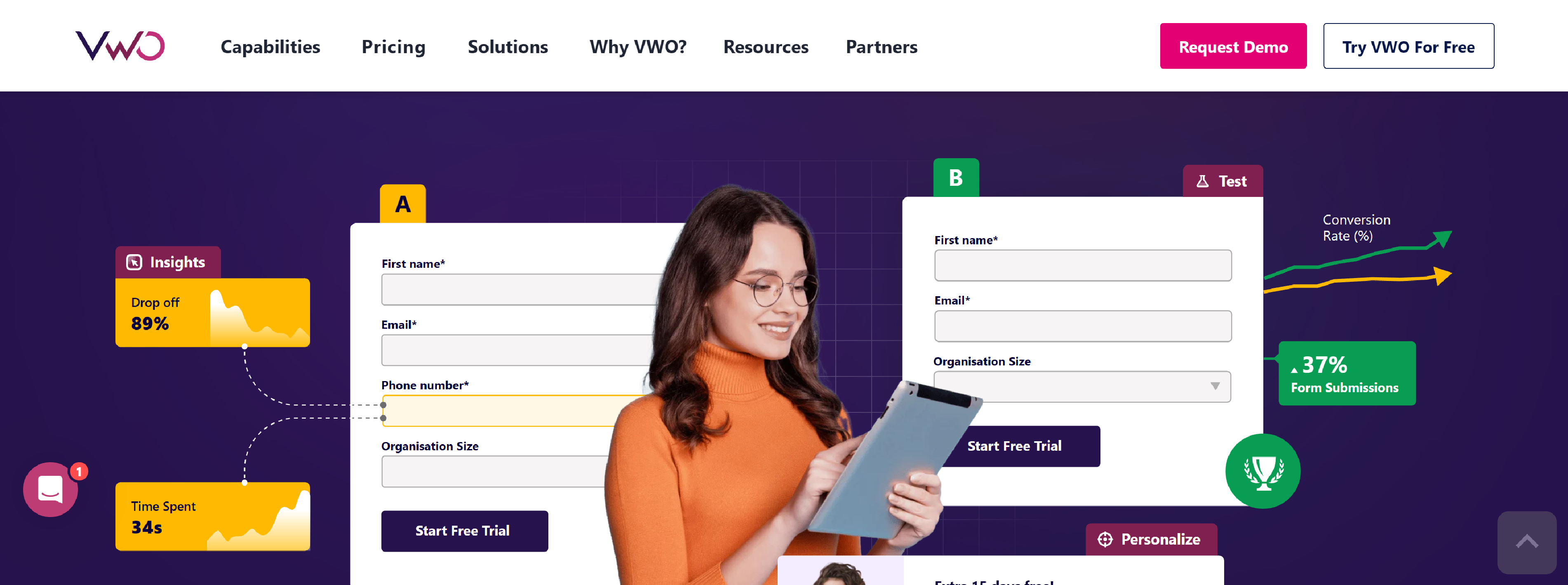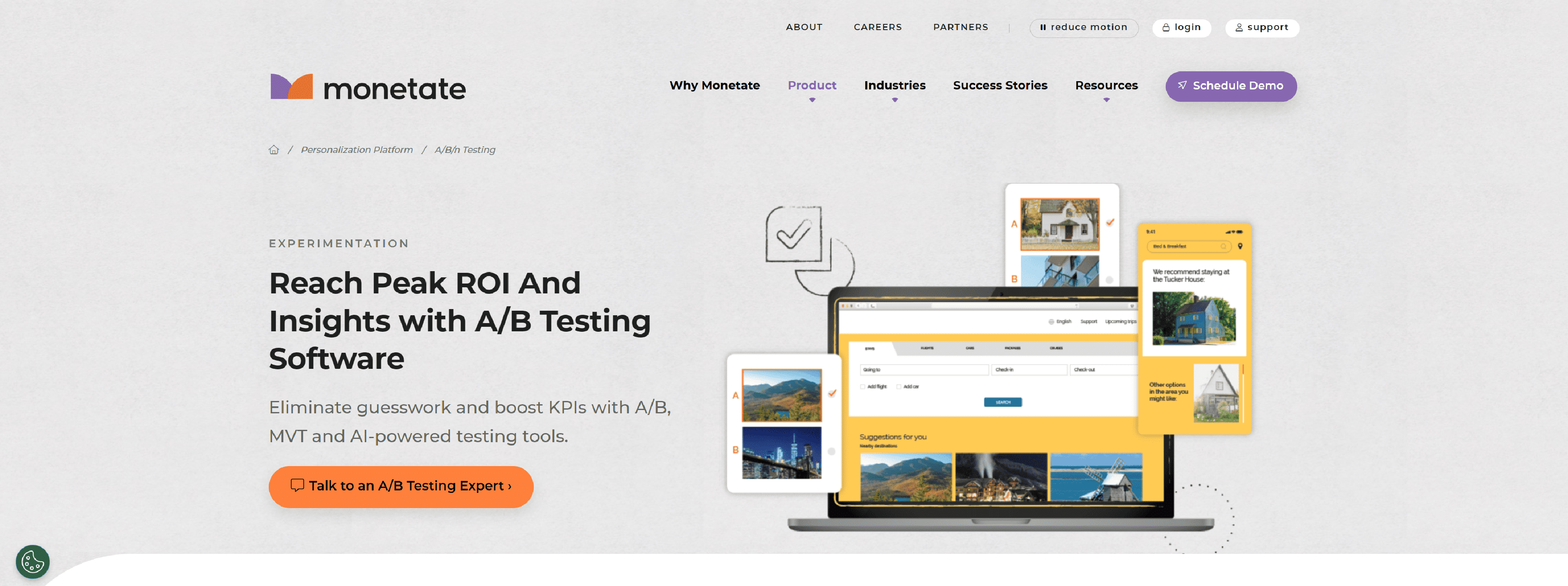A/B Testing Software is a tool used to perform A/B testing, a method of comparing two versions of a webpage, app, or product feature to determine which one performs better. The goal is to improve metrics such as conversion rate, click-through rate, or engagement by systematically testing different variations of a given element.
A/B testing involves dividing your audience into two (or more) groups and showing each group a different version of a webpage or feature. You then analyze the performance of each version to determine which one yields better results.
- Version A is usually the current version (called the “control”).
- Version B is the new version (called the “variant”).
A/B testing helps marketers, product managers, and developers make data-driven decisions on how to improve their website, app, or product features by testing small changes like:
- Headlines
- Images or videos
- Call-to-action (CTA) buttons
- Color schemes
- Form layouts
- Product descriptions
Discover the top 5 best A/B Testing Software
Convert

Convert.com’s A/B testing tool has split testing, personalization, advanced goals, fast support, and monthly payments.
- Enterprise grade A/B testing features at self-service prices
- Set Up Every Kind of Experiment Possible
- Powerful New Visual Editor
- Audience Targeting Engine with 40+ Filters
- QA Tests Efficiently, Without Modal Hopping!
- A/B Testing Improves Real Business KPIs. Let the C-Suite Peek
- Full Stack Experimentation
- A/B Testing for E-Commerce brands
Figpii

Elevate your testing experience with FigPii – the fast, user-friendly platform with all the essential features to streamline your experimentation program.
- More Efficient and Simple User Interface
- Built-in Session Recording Engine That Integrates Smoothly With Your A/B Testing Tool
- Smoothly integrates With Your Stack
- Limitless Testing Possibilities
Vwo

VWO has created a collection of free tools to help you validate your optimization & engagement ideas for your business needs
- CRO Experimentation Checklist
- A/B Test Significance Calculator
- A/B Test Duration Calculator
- A/B Test Sample Size Calculator
- Web Push Notification ROI Calculator
- Cart Abandonment Calculator
- Landing Page Analyzer
- AI-Powered Free Heatmap Generator
Monetate

Monetate – ecommerce focused A/B testing software lets teams easily test at scale to validate that their proposed changes are worth the investment.
- Robust A/B, A/B/n & MVT Testing
- ML-Powered Dynamic Testing
- Segmented Experiences
- Omnichan
- Improved Page Load Speed
- Analytics & Insights
Abtasty

Abtasty – experience optimization partners pushing brave ideas from the inside out. The only digital experience platform you need.
- Web Experimentation
- Feature Experimentation
- Content Personalization
- Rollouts
- Search
- Recommendations
- Merchandising
Q&A on A/B Testing Software
Q1: What is A/B testing software?
A1: A/B testing software is a tool used to compare two or more variations of a web page, app, or other user interface elements to determine which one performs better in terms of user engagement, conversion rates, or other key performance indicators (KPIs). It works by randomly showing different versions (A, B, etc.) to users and analyzing how each version affects the target metric.
Q2: Why is A/B testing important?
A2: A/B testing allows businesses to make data-driven decisions rather than relying on guesswork or intuition. It helps optimize user experiences, improve conversion rates, increase revenue, and reduce bounce rates. By testing different variations of elements like headlines, images, calls to action (CTAs), or even entire page layouts, companies can ensure they are providing the most effective version to their audience.
Q3: What types of tests can A/B testing software perform?
A3: A/B testing software can run several types of tests, including:
- Classic A/B Testing: Compares two versions of a single page or feature to see which performs better.
- Multivariate Testing: Tests multiple variables (e.g., different headlines, buttons, and images) simultaneously to see which combination performs best.
- Split Testing: Similar to A/B testing, but splits traffic across entire different landing pages, rather than just variations of the same page.
- Multivariate Testing: Tests multiple variations of different elements on the page to see how they interact and which combination is the most effective.
- Redirect Testing (Split URL Testing): Divides users into groups that see entirely different URLs for the same content, to test bigger design changes.
Q4: How does A/B testing software work?
A4: A/B testing software typically follows this process:
- Set up test parameters: Choose what you want to test (e.g., headline, image, CTA), and create alternative versions.
- Segment users: The software divides visitors into random groups and shows them different versions (Version A, Version B, etc.).
- Measure performance: Define metrics to track, such as conversion rates, bounce rates, engagement time, or any other desired outcome.
- Analyze results: After enough data has been collected, the software provides insights into which version performed better.
- Implement findings: Once the winning variant is identified, you can implement it to improve overall performance.
Q5: What are the key features to look for in A/B testing software?
A5: When choosing A/B testing software, look for the following features:
- Ease of Use: An intuitive interface and simple setup process.
- Advanced Targeting & Segmentation: Ability to segment users based on behavior, demographics, or traffic sources.
- Integrations: Seamless integrations with analytics tools, CRM systems, and other platforms.
- Data Analytics & Reporting: In-depth analytics and clear reporting of results, including statistical significance testing.
- Multivariate Testing: Ability to test multiple variables simultaneously.
- User Behavior Tracking: Features like heatmaps, session recordings, and user journey analysis to understand user interaction.
- Real-Time Testing: The ability to monitor tests in real time.
- Mobile Testing: The capability to test mobile-optimized experiences and apps.
- Personalization: Ability to deliver personalized experiences to users based on the test results.
Q6: How do I know if my A/B test results are statistically significant?
A6: Statistical significance ensures that the differences in performance between the variants are not due to random chance. A good A/B testing software will calculate the statistical significance for you. The most common metric used is p-value, typically aiming for a threshold of 0.05 or lower, which indicates there’s a 95% probability that the difference is not random.
Key factors that influence statistical significance include:
- Sample size: Larger sample sizes help ensure that results are more reliable.
- Test duration: You need to run the test long enough to gather meaningful data, accounting for daily and weekly traffic patterns.
- Effect size: The magnitude of the difference between the variants also affects statistical significance.
Q7: How long should an A/B test run?
A7: The duration of an A/B test depends on several factors, including:
- Traffic volume: High-traffic websites can gather data more quickly.
- Test objectives: If you are measuring something with a low conversion rate (like a purchase), it may take longer to reach statistically significant results.
- Variation complexity: Testing a single element will likely need less time than testing multiple variables or a complete page redesign.
A general guideline is to run the test for at least one or two weeks to account for normal fluctuations in user behavior and to gather enough data.
Q9: What are the benefits of A/B testing software beyond conversion rate optimization?
A9: While A/B testing is often used for conversion rate optimization (CRO), it can also provide other valuable benefits, such as:
- User Experience (UX) Improvements: Identifying UI/UX improvements that lead to better engagement and satisfaction.
- Improved Personalization: Testing different personalized experiences to see what resonates with specific audience segments.
- Content Optimization: Determining the types of content (images, videos, headlines) that perform best with your audience.
- Market Research: Gaining insights into user preferences, behavior, and pain points, which can inform product development, marketing campaigns, and customer service strategies.